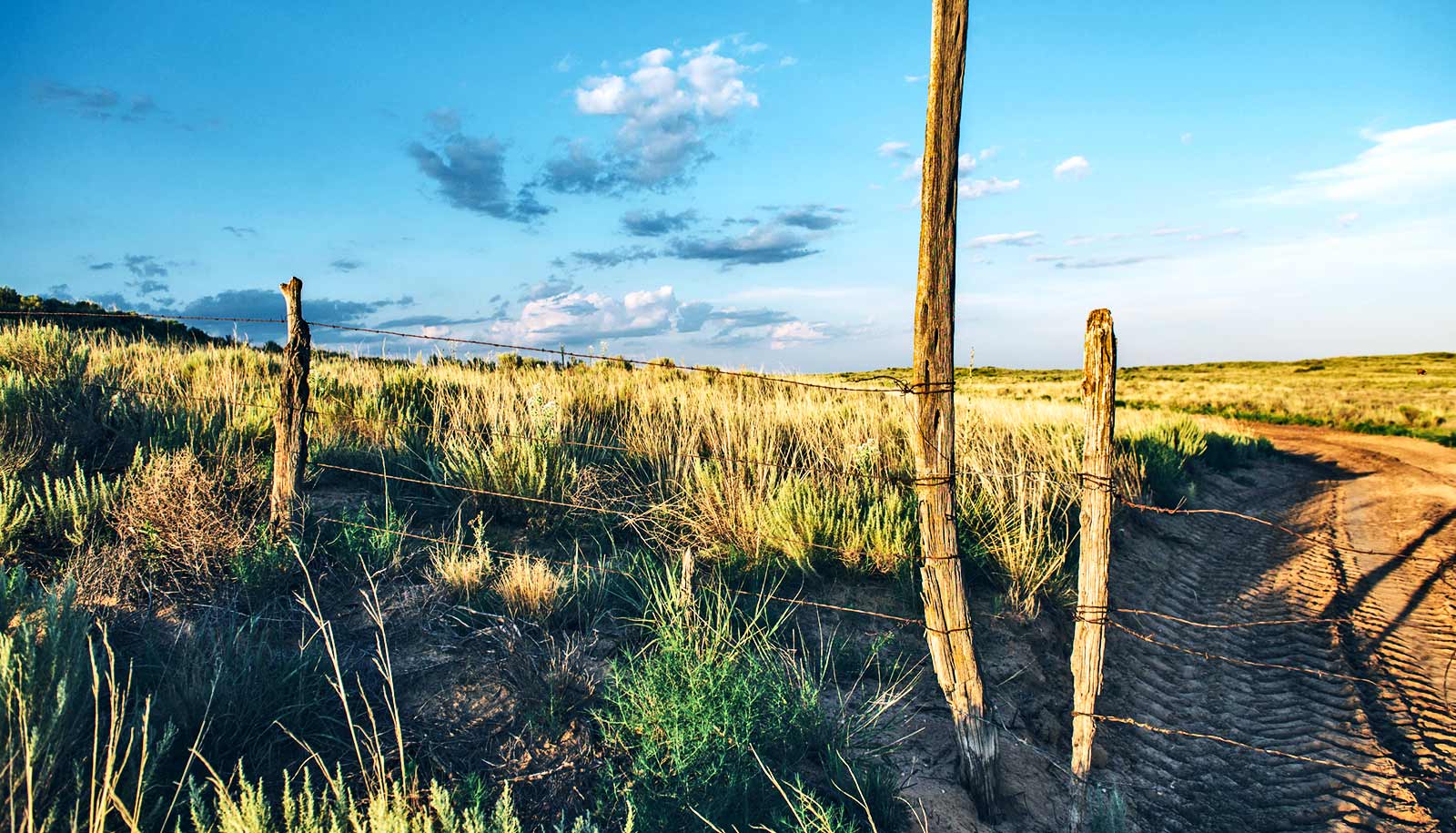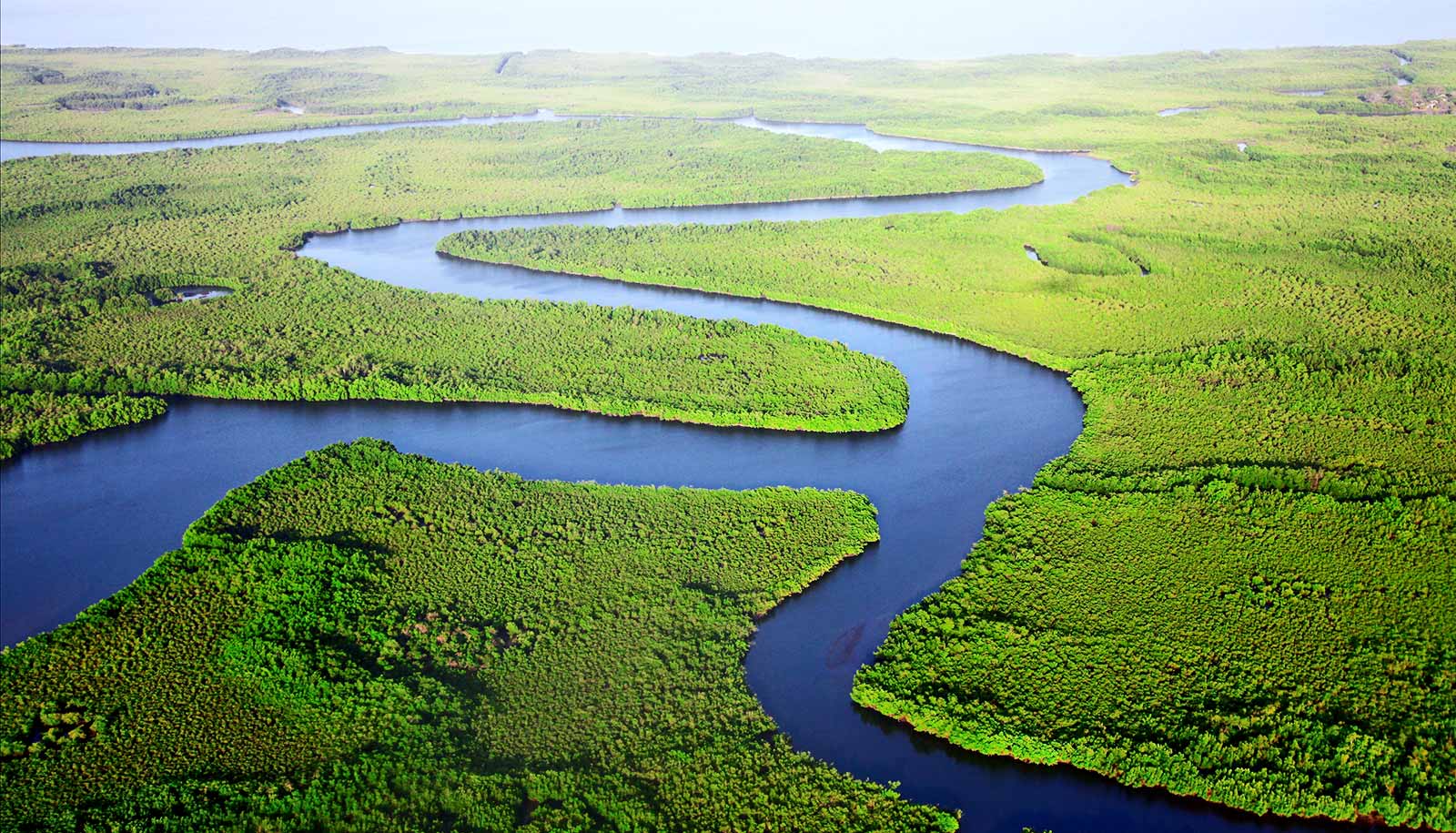New research reconstructs the unusual geological history of the American High Plains.
According to the research, a mantle wave passing beneath western North America over the last 20 million years is responsible for the formation of the High Plains, an area that starts at the eastern foot of the Rocky Mountains and extends across several of the United States.
Dropping just a few hundred meters over a length of more than 500 kilometers, the plains have only a very gentle gradient and the nearly flat surfaces exhibit unique ecosystems, making them a geological and ecological anomaly.
The High Plains have hundreds of thousands of small ephemeral lakes known as “playas,” that fill with rainwater only during wet seasons and dry out completely during dry periods. The lakes provide an important breeding, resting, and wintering habitat for millions of birds.
They also supply recharge to the groundwater reservoir known as the Ogallala aquifer. At 450,000 square kilometers, it is the largest aquifer in North America—and 10 times the size of Switzerland. Without these groundwater resources, agriculture in this dry region would be nearly impossible.
‘Too flat’
Geologists have given little attention to the High Plains in recent times.
“For alpine geologists used to working in high mountains, the region is too flat and considered uninteresting,” says Sean Willett, a professor of geology at ETH Zurich.
It was by chance that he and his two colleagues from the University of Nevada developed an interest in the region when they noticed a “peculiar patterns of streams” crossing the High Plains.
The High Plains formed 20 million years ago. Earth scientists only recently discovered a zone of unusually hot material in the Earth’s mantle that creates a wave of uplift that is slowly shifting from west to east under the continental plate.
This wave first uplifted the Colorado Plateau, then the Rockies, and finally the plains themselves, resulting in a steeper gradient of the mountains towards the plains, accelerating erosion. For 15 million years, a massive flow of sediment poured out of the mountains, down the river valleys and into the plains.
Sediment the rivers transported formed huge alluvial fans at the foot of the mountains. Gravel and coarse sand completely filled river valleys and all older topography, effectively “repaving” the landscape to form the gentle slopes of the modern high plains.
Alluvial fans
Because alluvial fans only have a very low gradient, rivers flowing down their surface lack erosive power. The surface of these plains sealed with sand, mud, and clay, thus making it possible for rain water to remain in sinks to form lakes.
Chemical processes eventually led to a calcification of the lakebeds and soils, forming limestone layers up to 10 meters thick. Finally, as it aged, cracks formed in the limestone, allowing water to seep through and feed a groundwater reservoir of vast area and volume, hosted in the gravels shed from the mountains.
“What we are seeing today is a landscape in transition. It will take five or ten million years until the High Plains have completely eroded.”
The flow of sediment finally stopped around three to five million years ago. Since then, the High Plains’ surfaces have changed very little (with the exception of human impact). “They are a preserved ancient landscape,” Willett says.
Rivers flowing from the Rocky Mountains did, however, seek out new paths and carved deeper into the subsurface along the edges of the prehistoric alluvial fans. This inexorable process is still underway: the rivers continue to erode the alluvial fans, which is evident in the formation of escarpments and badlands with dendritic patterns of streams and rivers cutting into the plateaus of the High Plains.
“What we are seeing today is a landscape in transition,” Willett says. “It will take five or ten million years until the High Plains have completely eroded.”
Willet does not see any immediate threat to the groundwater supply. However, people should be aware that the forces breaking down the High Plains are responsible for where groundwater is found today and where agriculture is possible.
There is nowhere else in the world quite like the High Plains. There are, of course, gigantic alluvial plains in South America as well, and in the part of the Himalayas located in India, Willett says.
“But the High Plains have been inactive for nearly five million years, whereas the other large alluvial fans are still in the process of formation.”
The research appears in Nature.
Source: ETH Zurich


